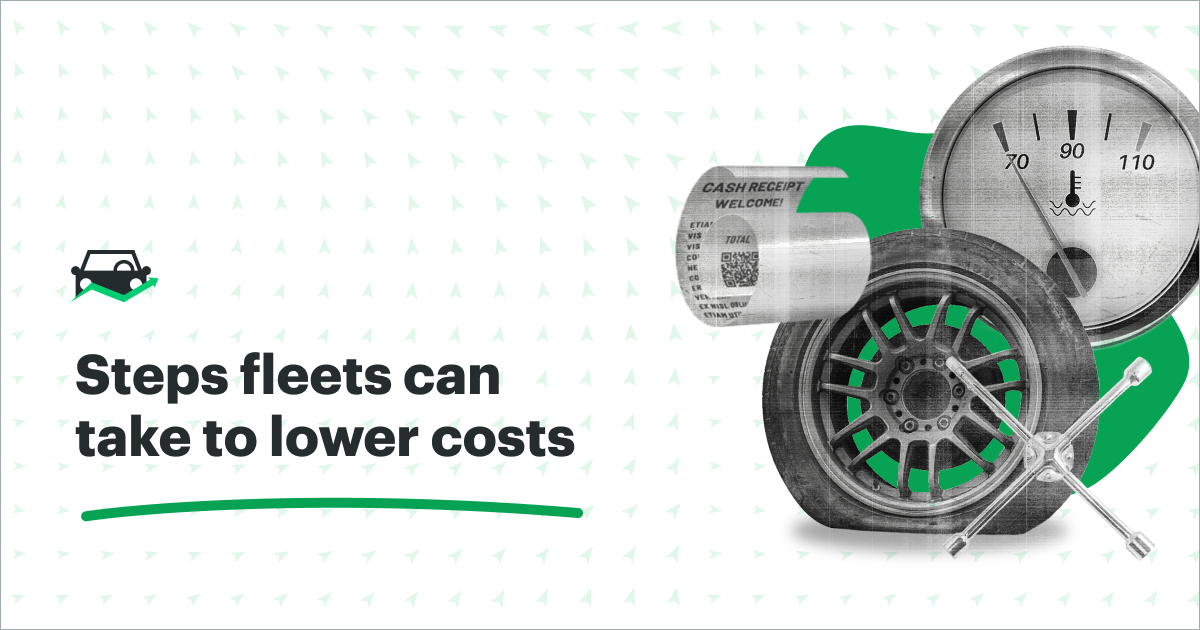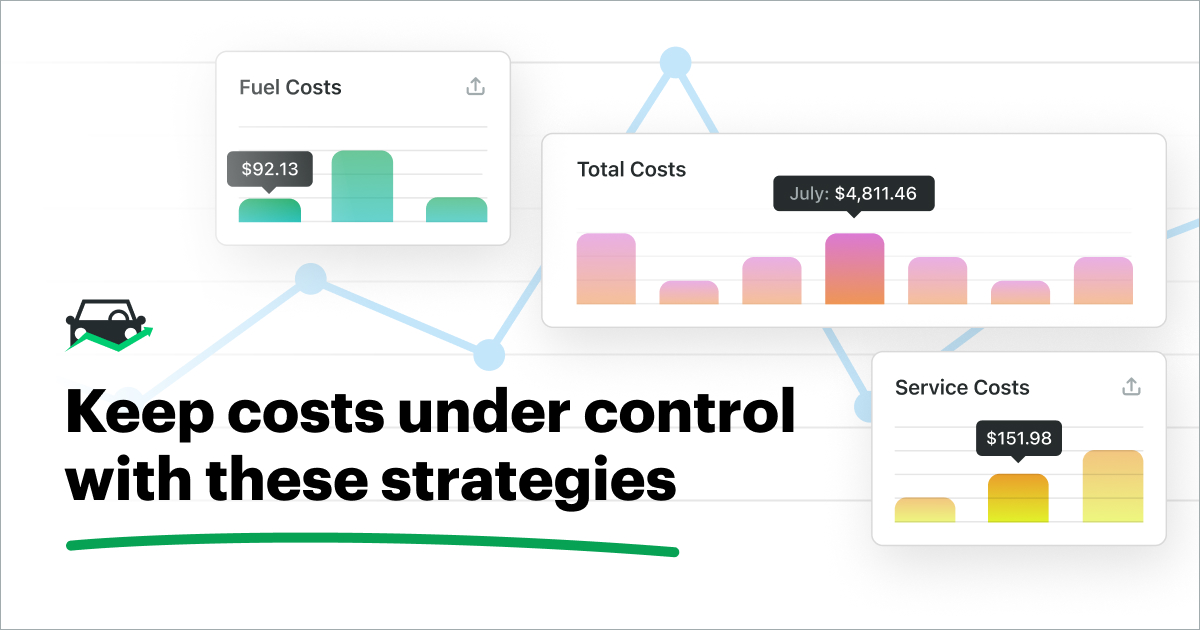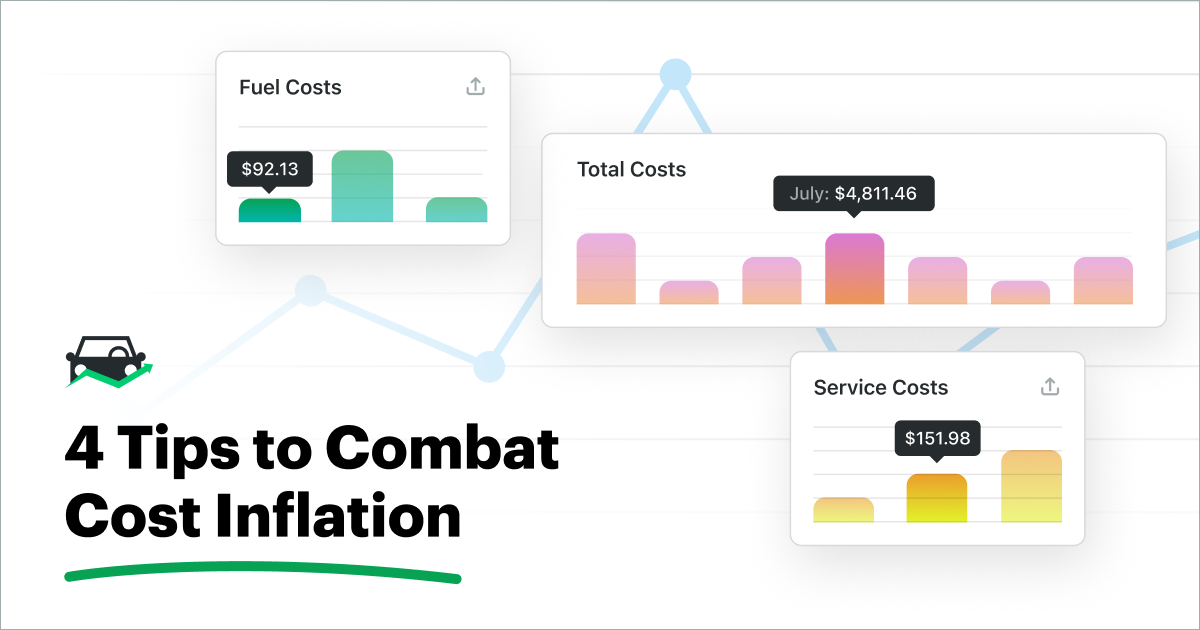With tight fleet budgets, it’s key to relieve pressure on your bottom line as much as possible. Investing time to strategically rethink components of your fleet can have major payoffs.

Cost Analysis
It goes without saying that if you’re not tracking your fleet costs as closely as you should, your budget numbers are going to quickly soar past your intended thresholds. If you’re having difficulty keeping your budget in check, there’s one metric you should focus on more than any other: total cost of ownership (TCO).
By calculating the TCO for each of your assets, you can get an accurate measure of the entire cost of operating your fleet and identify which assets are cost burdens. Without understanding that number, you won’t be able to determine what your set point is for your fleet as it stands, which makes it nearly impossible to come up with strategies to actually reduce your spending.
To determine your TCO, you’ll want to isolate all of your fixed costs (licenses and permits, taxes, loans and leases, depreciation) as well as begin to track your variable costs (fuel, maintenance, parts, tolls, etc.). Watching those variable costs can be as simple as using spreadsheet trackers to log things like maintenance and mileage, or you can let a fleet management software do the calculating for you.
Once you’ve got your fleet’s TCO figured out, continue tracking it over time as you institute changes throughout your fleet to see what’s actually working to lower that number. Little changes truly add up, so things like changing routes that lower your fuel costs or new parts inventory processes that lower your maintenance costs can mean a positively impacted TCO in a relatively short period of time.
Pay Less
While this may sound obvious, fleets may not be optimizing purchasing processes to pay less money for their goods and services initially. If you are not following these already, practices fleets can use to reduce initial fleet costs include:
- Utilizing cooperative purchasing agreements to reduce administrative effort and select better deals
- Establishing multi-year contracts
- Negotiating with vendors
- Developing purchase price assurances
Fleet Replacement and Disposal
As vehicles age, associated costs increase. Replacing your fleet vehicles periodically can help reduce overall costs, including downtime, maintenance and repairs, fuel and safety risk management.
Developing an effective vehicle replacement plan is a time investment, but it can provide long-term savings for your fleet. It involves creating a detailed inventory of your fleet, establishing parameters for when to replace vehicles and estimating associated costs.
When it comes time to actually get rid of more outmoded vehicles, the more money you can get for a fleet vehicle you are selling, the better. Best practices to increase the going rate of vehicles include:
- Sell as soon as possible since the value of vehicles can depreciate by $6 a day
- Increase your potential buyer base through tools like online auctions
- Prepare vehicles for sale by cleaning, providing manuals and service records
Rightsize Your Fleet
Fleet rightsizing goes hand in hand with a vehicle replacement strategy and allows you to purge your fleet inventory of vehicles that are highly specialized or underutilized. These vehicles are likely not crucial for fleet operations and shedding them can lower maintenance, fuel and administration costs.
The rightsizing process involves the following steps:
- Identify major fleet vehicle classifications
- Calculate average annual utilization by class and identify vehicles with utilization rates in the bottom 50 percent
- Pinpoint special vehicle utilization circumstances
- Determine vehicle criticality
- Survey users to find average trips per day, number of people transported, typical use, result if vehicle is not available
- Dispose of the non-critical vehicles
Centralize Fleet Software
Many fleets that have embraced software solutions can sometimes experience tech bloat, where too many programs are managing single facets of their operations. When fleet management is consolidated to as few platforms as possible, it can provide efficiencies and cost savings that individual departments cannot realize, as well as provide more concise insight across the different cost centers of your fleet that those programs are tracking.
Consolidating fleet management provides:
- Larger economies of scale
- Increased efficiency through fewer redundancies
- Greater flexibility through shared resources like tools, technicians, etc.
- Standardization of processes and outcomes
- More holistic perspective of the fleet
Consider looking into a more comprehensive fleet management software to maximize efficiency in your logging process, as well as save money on software agreements and other areas of your fleet that you track through those software.
Streamline Outsourced Maintenance
Outsourced maintenance can save fleets money, but costs can also get out of hand when maintenance vendors are not managed effectively.
In order to optimize costs with your maintenance providers:
- Require authorization for all repair tasks or tasks at a certain threshold
- Establish and schedule specific preventative maintenance tasks
- Develop performance standards including time and quality
- Conduct quality checks
- Review invoices for accuracy
Also consider finding new ways to track the work that’s being done with your external vendors. Some fleet management platforms, like Fleetio, let you integrate with certain third party providers so that you can track and approve work orders and invoices in the same platform you process other fleet budget items, giving you more visibility into exactly what’s being done to your assets in the shop and how much it’s going to cost you.
Manage Warranties
All too often, warranty management is a missed opportunity for fleets. It’s important to keep up with warranties so you can avoid paying for parts or services that are already covered – otherwise, you could be leaving money on the table.
If it is difficult to stay organized, one way to keep up with all this information is to store it in your fleet maintenance software.
Want to know if Fleetio can actually help you lower your costs? Check out our analysis on how FMS can get you the most bang for your buck.



